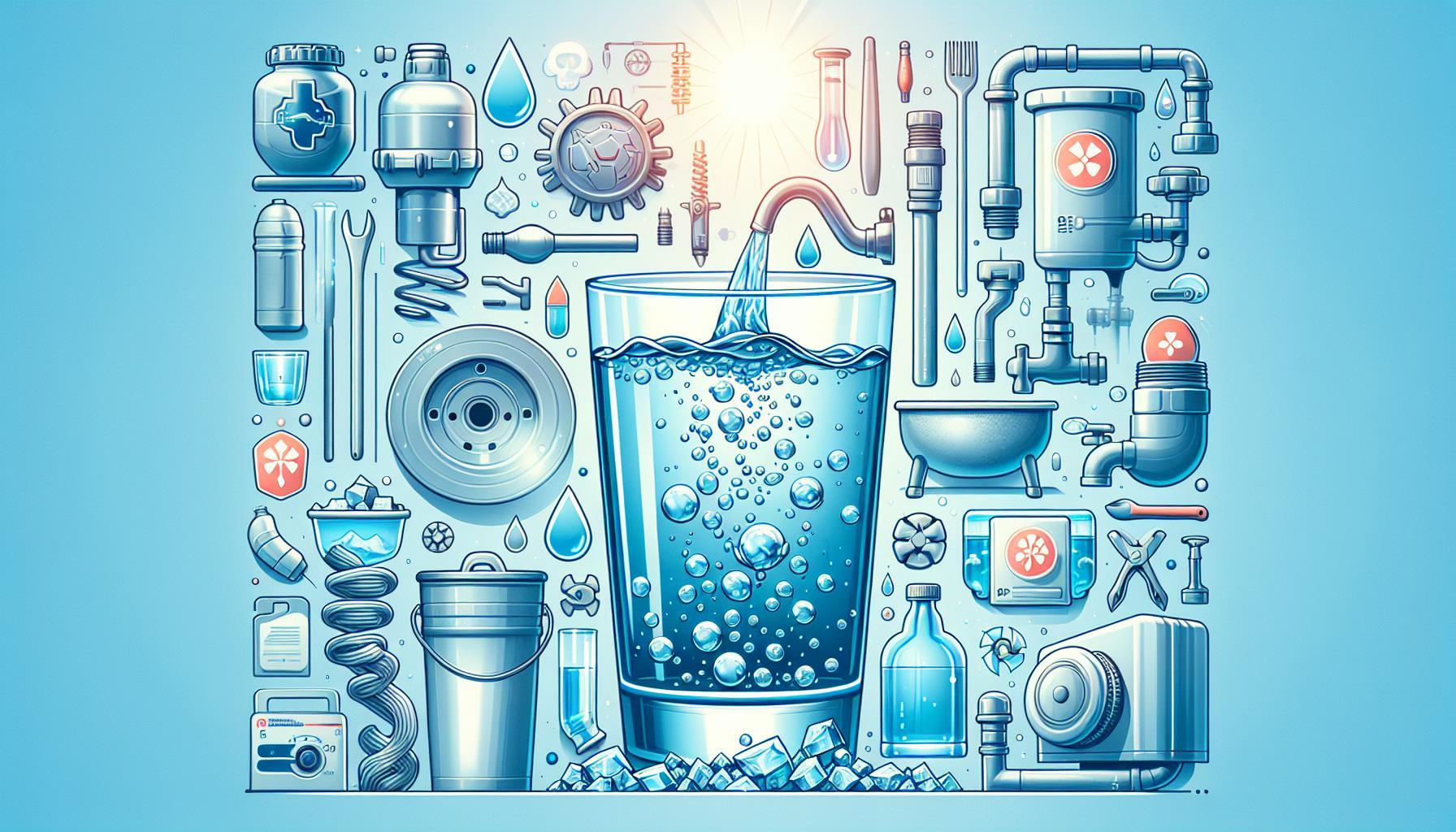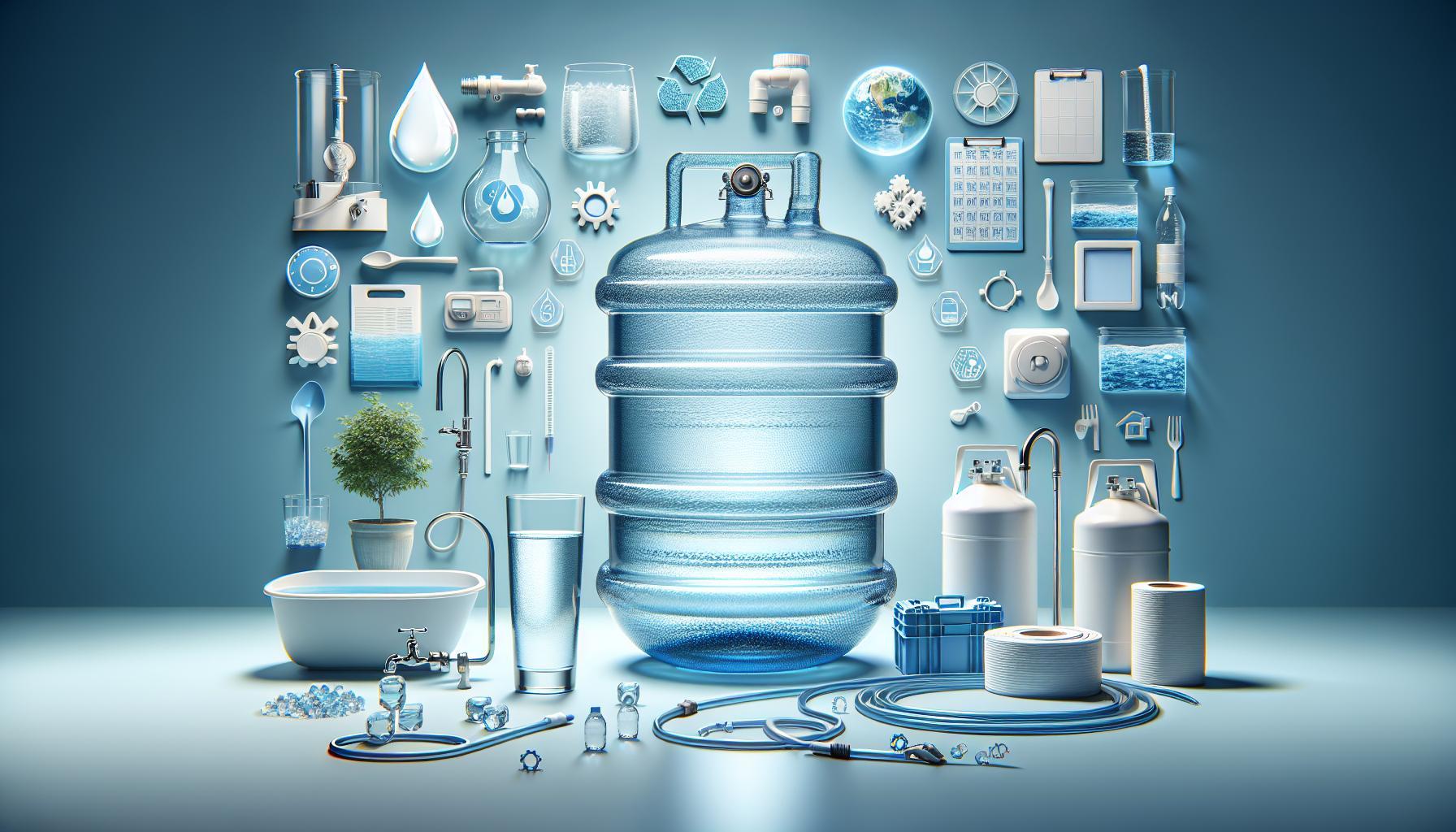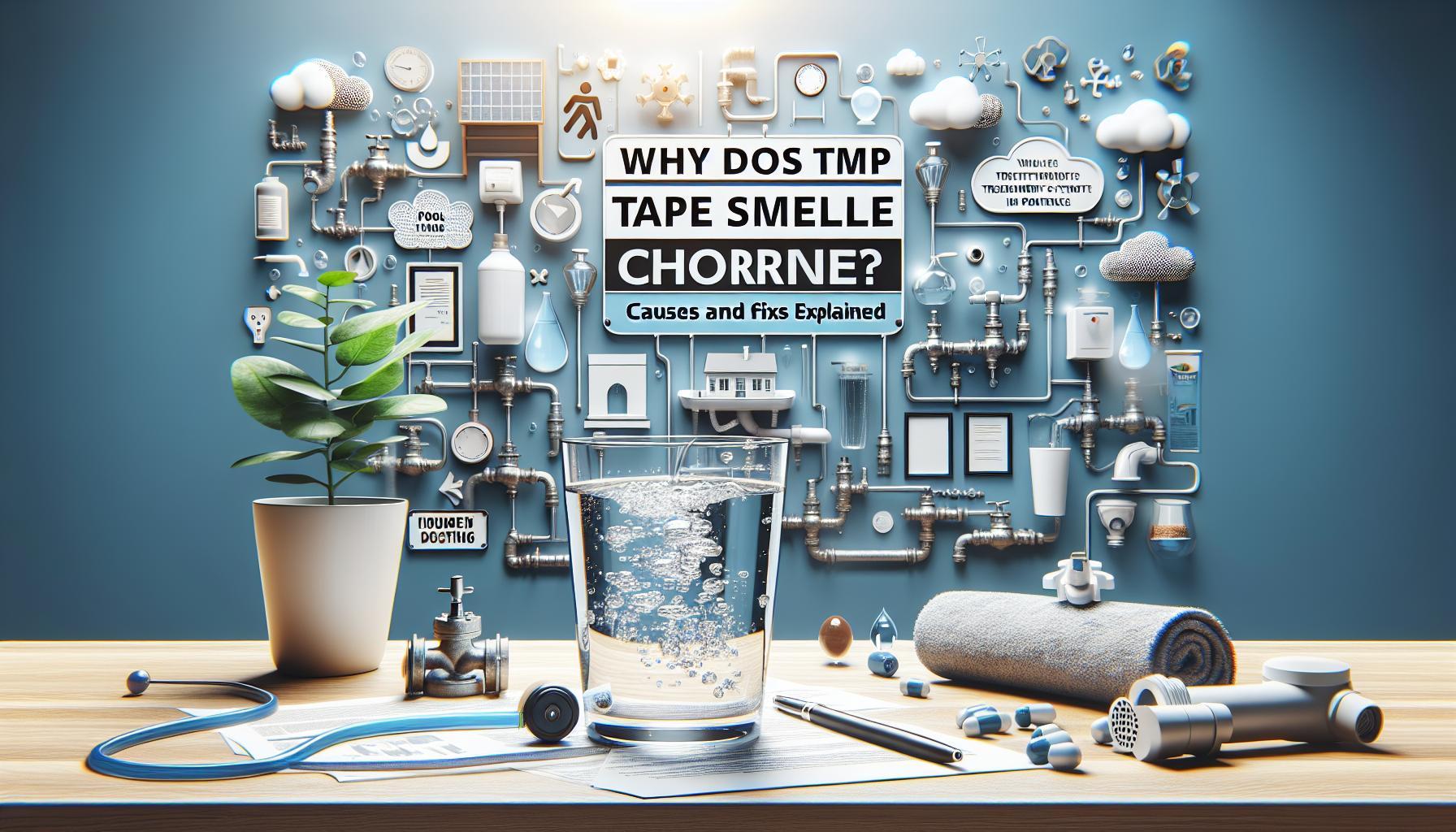Are you confident that the water flowing from your tap is safe to drink? In Turkey, varying water quality across regions poses significant health risks, making it vital for residents and travelers to understand local conditions and safety guidelines. This article delves into the pivotal factors affecting Turkey’s water safety and offers essential advice for protecting your health.
Understanding Water Quality in Turkey: Key Regional Differences
In Turkey, water quality varies significantly from one region to another, influenced by a multitude of factors including geographical features, industrial activities, agricultural practices, and population density. This regional disparity can impact not only the safety of drinking water but also the overall health of the ecosystems within those regions. Understanding these differences is crucial for residents, tourists, and policymakers alike.
Geographical Influences on Water Quality
The unique geography of Turkey plays a pivotal role in determining water quality. For instance, the coastal regions generally exhibit better water quality due to extensive filtration through sandy beaches and less industrial pollution. In contrast, inland areas often grapple with higher levels of contamination due to agricultural runoff and industrial effluents. Here are some key aspects to consider:
- Marmara Region: This area is heavily industrialized, resulting in higher levels of pollutants in water bodies such as the Sea of Marmara.
- Aegean Region: Known for its scenic coastlines, this region tends to have cleaner waters but faces seasonal challenges due to tourism and agricultural runoff.
- Central Anatolia: Characterized by a dry climate, this region often deals with water scarcity and challenges around water management.
- Eastern Anatolia: Higher altitudes result in unique environmental conditions, but industrial activities have led to local pollution issues.
Key Regional Differences in Water Quality
According to the Turkey Water Quality: Regional Analysis and Safety Guidelines, various studies illustrate that urban areas, such as Istanbul and Ankara, face distinct risks of contamination. In densely populated regions, the stress on water supply systems can exacerbate pollution levels, making water treatment and management priority concerns. Common contaminants include bacteria, heavy metals, and pesticides, which can pose health risks, particularly for vulnerable populations like children and the elderly.
| Region | Main Contaminants | Water Treatment Status |
|---|---|---|
| Marmara | Heavy metals, bacteria | Moderate, but requires improvement |
| Egean | Pesticides, nitrates | Generally good, but seasonal challenges |
| Central Anatolia | Nitrates, industrial runoff | Poor, urgent improvements needed |
| Eastern Anatolia | Heavy metals, local pollutants | Fair, but capacity issues |
In light of these challenges, local authorities and communities must enhance their efforts toward sustainable water management. Practical steps include regular testing of water sources, investing in advanced treatment technologies, and implementing stricter regulations regarding industrial waste disposal. By fostering a culture of accountability and cooperation among stakeholders, Turkey can work towards improving water quality across all regions, mitigating health risks, and preserving its vital water resources for future generations.
Common Water Contaminants and Their Health Impacts

Contaminated water poses significant risks to health, especially in regions where quality checks are either insufficient or infrequent. For example, the water quality in various regions of Turkey often reveals a troubling mix of contaminants that can lead to serious health issues. Understanding these common water contaminants and their potential health impacts is essential for developing effective safety guidelines.
Common Contaminants in Turkey’s Water Supply
Water sources in Turkey can be affected by different types of pollutants. Among the most prevalent are:
- Microbial Contaminants: Pathogens such as bacteria, viruses, and protozoa can enter the water supply through sewage runoff. Ingesting contaminated water can lead to gastrointestinal illnesses, cholera, and dysentery.
- Chemical Contaminants: Heavy metals like lead, arsenic, and mercury are of particular concern. These toxins can originate from industrial discharges or natural mineral deposits, leading to chronic health conditions such as cancer, neurological disorders, and kidney damage.
- Nitrates: Primarily a result of agricultural runoff, high levels of nitrates can cause methemoglobinemia, or “blue baby syndrome,” which affects infants and reduces their ability to carry oxygen in the blood.
- Pesticides and Herbicides: Residues from agricultural chemicals can seep into groundwater, posing risks of hormone disruption and increased cancer risk upon exposure.
Health Impacts of Contaminants
The health implications of consuming contaminated water can be severe and varied. The following table summarizes some common contaminants found in Turkey’s water supply along with their associated health risks:
| Contaminant | Source | Health Impact |
|---|---|---|
| Microbial Pathogens | Sewage pollution | Gastrointestinal diseases, cholera |
| Lead | Old plumbing, industrial waste | Developmental issues, neurotoxicity |
| Nitrates | Agricultural runoff | Methemoglobinemia in infants |
| Pesticides | Farming practices | Cancer risk, hormone disruption |
In light of these concerns, it is critical for local communities and authorities to prioritize water quality monitoring and implement regulatory measures. For individuals, practical steps such as using water filters certified to remove specific contaminants, boiling water for purification, and engaging in community advocacy for clean water access can significantly mitigate health risks associated with poor water quality. By raising awareness of the implications of water contamination within Turkey, we can foster a proactive approach towards improving water safety and ultimately public health.
Navigating Turkey’s Water Regulations: What You Need to Know
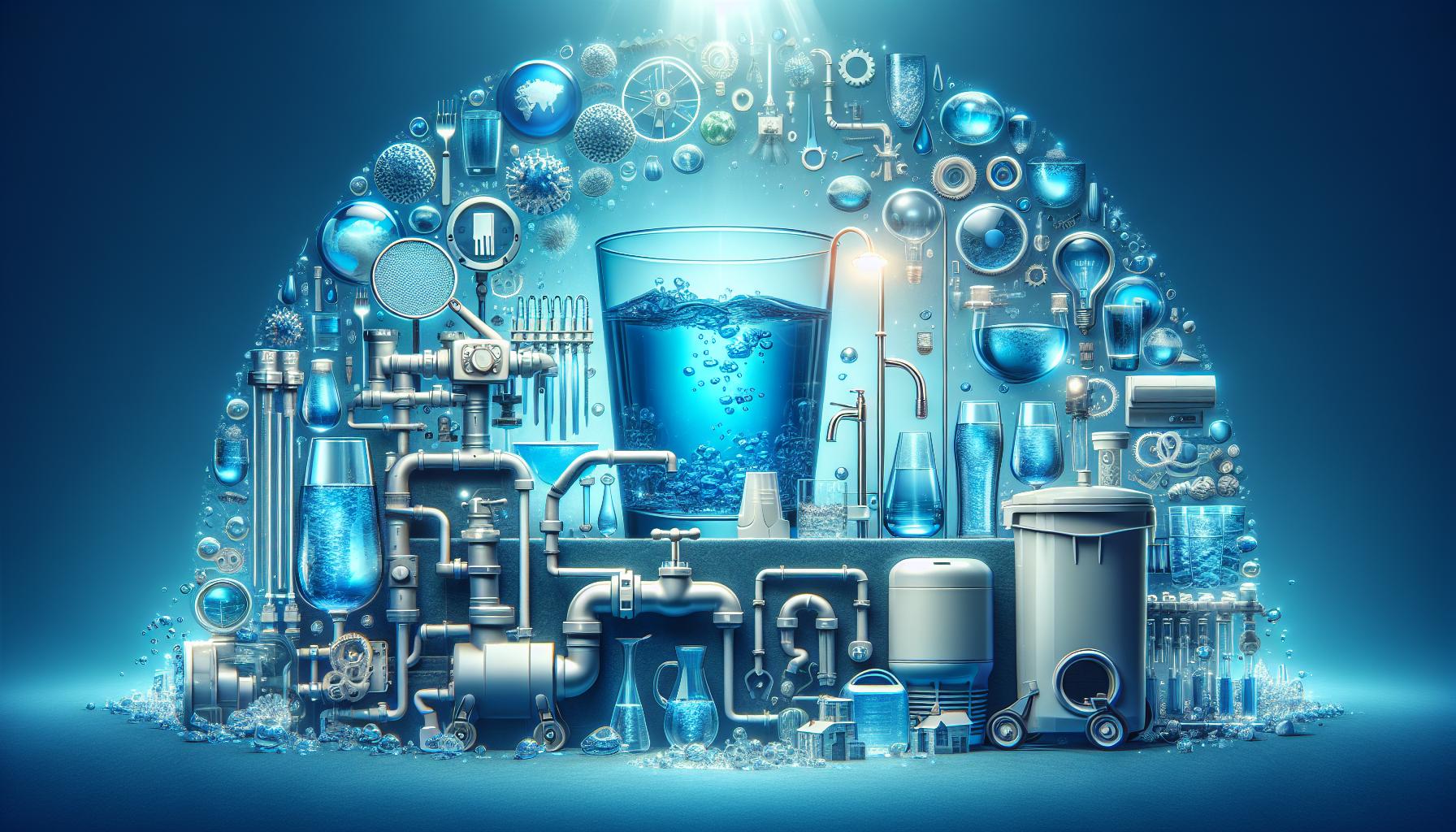
Navigating the complexities of Turkey’s water regulations is essential for anyone involved in the water sector, whether as a resident, visitor, or business operator. With Turkey’s diverse geography and varying regional water quality, understanding the legal framework and compliance requirements can be quite intricate. The recent analysis of water quality across different regions has highlighted significant differences and potential risks, making knowledge of local regulations crucial for safety and compliance.
Understanding Turkey’s Regulatory Framework
Turkey’s water regulations are primarily governed by the Water Law (No. 2560), which aims to manage water resources sustainably and protect water quality. The law outlines key responsibilities for national and local authorities while establishing safety guidelines for different water uses. Here are some vital points to consider:
- Compliance with Standards: All water supplies must meet the standards set by the Turkish Standards Institution (TSE) and the Ministry of Health, particularly for potable water.
- Licensing Requirements: Businesses engaged in the extraction, bottling, or distribution of water are required to obtain the appropriate licenses and adhere to environmental impact assessments.
- Monitoring and Reporting: Regular monitoring of water sources is mandatory, with reports submitted to local authorities to ensure compliance with quality standards.
Regional Considerations for Water Quality
Due to geographical and climatic diversity, water quality can vary dramatically across Turkey. For instance, coastal regions may have different contaminants compared to inland areas. Businesses and residents should note regional reports that examine specific risks, as discussed in the Turkey Water Quality: Regional Analysis and Safety Guidelines.
A practical approach for stakeholders includes:
- Consulting local health offices for updated regional water quality reports.
- Implementing filtration systems where necessary, especially in areas with reported contaminants.
- Participating in awareness programs that promote sustainable water usage and pollution prevention.
| Region | Common Contaminants | Recommended Actions |
|---|---|---|
| Marmara | Heavy Metals | Use filtration systems, regular testing |
| Aegean | Pesticides | Consult local sources, practice organic farming |
| Central Anatolia | Nitrates | Install reverse osmosis filters, test water regularly |
| Southeastern Anatolia | Salinity | Use desalination methods for irrigation |
Up-to-date awareness of local conditions and regulations can significantly contribute to maintaining not just compliance but also safety and public health. Regular interaction with local authorities and understanding regional water quality findings will empower residents and businesses to make informed decisions, ensuring the continued safety of Turkey’s water resources.
Practical Tips for Testing and Improving Your Water Quality

Ensuring the safety and quality of the water you consume is fundamental to your health, particularly in the varied regions of Turkey, where water quality can differ dramatically. Understanding how to test and improve your water quality can empower you to take control of your health and safety. Here are some practical steps you can implement to assess and enhance your water quality effectively.
Testing Your Water Quality
The first step in your journey to better water quality in Turkey involves testing. Here are some recommended methods:
- Home Testing Kits: Consider purchasing a reputable home water testing kit that can analyze contaminants such as lead, bacteria, nitrates, and pH levels. These kits can provide immediate results and are often user-friendly.
- Laboratory Testing: For a more thorough analysis, especially if you suspect severe contamination, use a certified laboratory. Collect a water sample following their guidelines and send it for detailed chemical and biological testing.
- Turbidity Testing: Maintaining low turbidity is essential for water quality. Use a turbidity meter to measure cloudiness, as high turbidity can indicate the presence of harmful particles or microorganisms.
Improving Water Quality
Once you’ve tested your water, it’s crucial to take actionable steps to improve its quality. Here are some methods to consider:
- Filtration Systems: Invest in a quality water filter that can effectively remove contaminants. Reverse osmosis and activated carbon filters are popular choices. Make sure the filter is suited for the specific contaminants detected in your water test.
- Regular Maintenance: If you’re using a private well, ensure regular maintenance and testing of your well system. This includes checking for leaks and structural integrity, as well as annual water testing to prevent potential contaminations.
- Public Access Points: In regions with known water quality issues, utilizing public water access points that have been regularly tested and treated can be a safe alternative. Check local health department reports for their quality ratings.
Staying Informed
Continuously educating yourself about the specific water quality issues in your region of Turkey is paramount.
- Follow Local Guidelines: Keep abreast of safety guidelines and water quality reports issued by local health authorities. They provide critical information on seasonal changes in water quality and any immediate safety advisories.
- Engage with Your Community: Participate in local forums or community initiatives aimed at improving water quality. Sharing resources and knowledge can bolster communal efforts and awareness.
Utilize these actionable tips to take control of your water quality situation effectively. By testing and improving water standards, you can help ensure not only your own health and safety but also contribute positively to the community in the broader context of the *Turkey Water Quality: Regional Analysis and Safety Guidelines*.
| Method | Description |
|---|---|
| Home Testing Kits | Simple kits for immediate contamination checking. |
| Laboratory Testing | Thorough analysis for serious contamination concerns. |
| Filtration Systems | Devices designed to eliminate specific contaminants. |
| Community Engagement | Collaborating with local initiatives to enhance water quality. |
Regional Water Safety Guidelines: A Closer Look
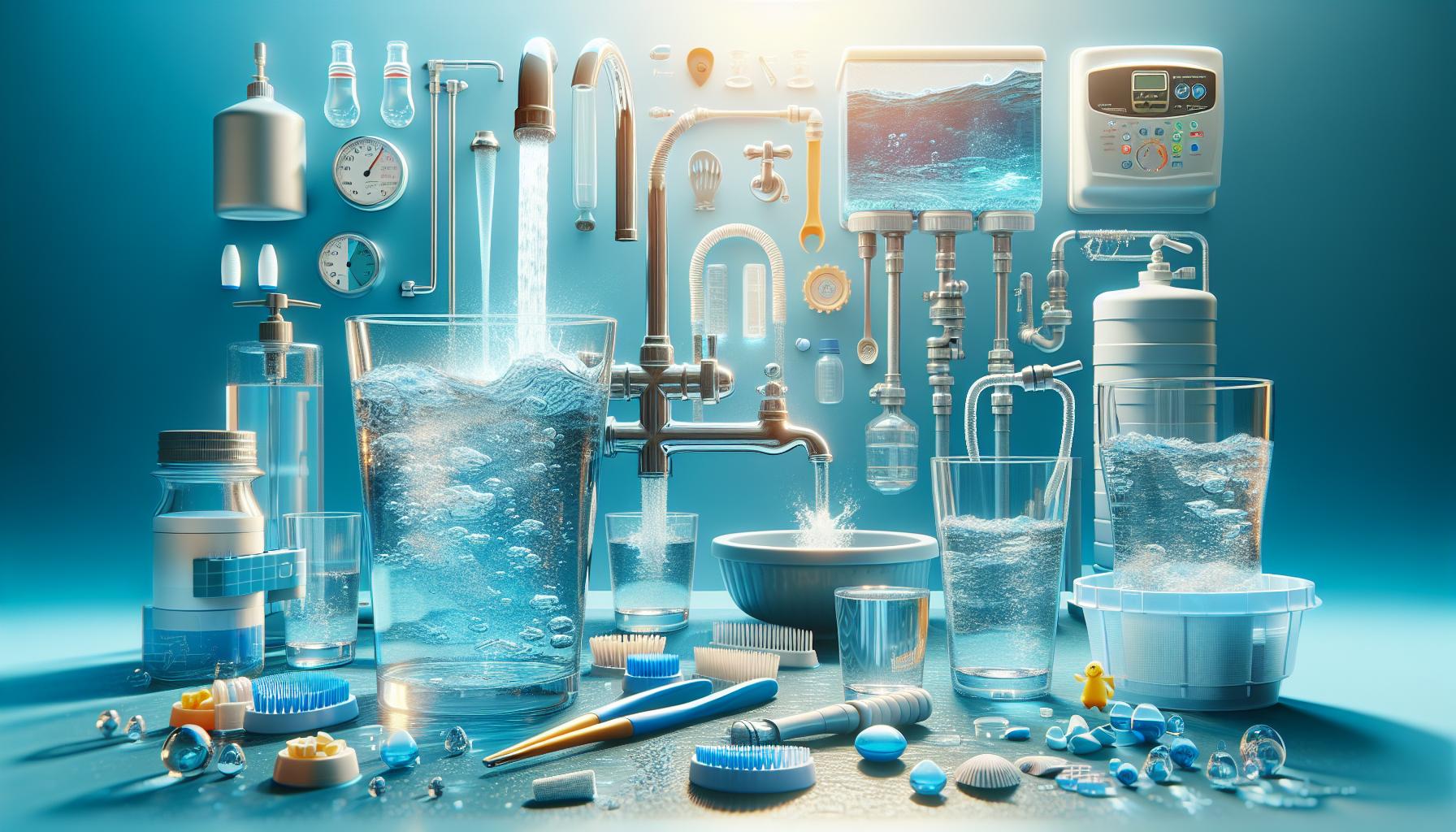
Ensuring safe and clean water is paramount for public health, especially in a country as diverse as Turkey, where water quality can vary significantly by region. Understanding the specific safety guidelines tailored to each area can empower residents and travelers alike to make informed choices about their water consumption, thereby mitigating health risks associated with contaminated sources.
Understanding Regional Variability in Water Quality
Turkey’s diverse geography means that water quality is influenced by numerous factors, including industrial activity, agricultural practices, and even seasonal changes. Regions such as the Aegean and Mediterranean coasts generally enjoy better water quality due to stringent environmental protections and lower levels of pollution. In contrast, areas near major industrial zones or densely populated cities may experience higher levels of contaminants. Regional water safety guidelines are thus crucial to navigate this complexity.
- Aegean Region: Known for its pristine beaches, the water quality is excellent for swimming and consumption but regular monitoring is advised, particularly during peak tourist seasons.
- Marmara Region: While urbanization has improved infrastructure, industrial waste can impact water quality. Residents should consider using water purification systems.
- Central Anatolia: Water sources can be susceptible to agricultural runoff. Boiling water or using filtration systems before consumption is recommended.
- Eastern Anatolia: Freshwater sources may vary; routine testing for harmful microorganisms is essential for ensuring water is safe.
Practical Actions for Enhancing Water Safety
Residents and visitors must adopt specific precautionary measures tailored to the unique conditions of their respective regions. For example, the Turkish Ministry of Health often publishes local advisories that provide insights into current water safety trends and alerts about any widespread issues.
If you’re in an area with questionable water quality, consider these steps:
- Use bottled water for drinking, especially in regions known for contamination risk.
- Install water filters that adhere to national safety standards to safeguard against heavy metals and microorganisms.
- Stay informed about local water sources via municipal announcements or health department advisories.
- Create a community initiative to regularly test local water sources, fostering collective awareness and action toward water safety.
Table of Recommended Actions by Region
| Region | Recommended Action | Frequency |
|---|---|---|
| Aegean | Monitor local advisories for seasonal changes | Monthly |
| Marmara | Use filters and boil water before consumption | Daily |
| Central Anatolia | Regular testing for contaminants | Quarterly |
| Eastern Anatolia | Community testing initiatives | Biannually |
By adhering to region-specific safety guidelines and being proactive about water quality, individuals can significantly reduce health risks associated with drinking water throughout Turkey. Such efforts not only safeguard personal health but also contribute to broader public health initiatives aimed at ensuring clean water for all.
The Role of Local Communities in Water Quality Management
In Turkey, local communities are at the forefront of water quality management, playing a pivotal role in safeguarding their most precious resource. Recent assessments reveal that effective water management significantly hinges on the active involvement of residents, making it crucial to understand how community initiatives can enhance water quality across diverse regions of the country.
Empowering Local Voices
Community engagement in water quality management is not just beneficial; it is essential. Local populations possess a wealth of knowledge about their water sources and the environmental challenges they face. By participating in decision-making processes, communities can ensure that policies reflect their needs and conditions. Some effective strategies include:
- Community Workshops: Organizing educational programs to raise awareness about water pollution and conservation techniques.
- Local Monitoring: Establishing groups tasked with regularly testing and monitoring water quality, which can lead to quicker response times in addressing pollution issues.
- Advocacy and Policy Input: Encouraging citizens to voice their concerns to local authorities and contribute suggestions for improved regulations.
Real-World Examples
Regions in Turkey have seen promising outcomes from localized initiatives aimed at improving water quality. In some municipalities, community-led projects that focus on restoring groundwater and enhancing wastewater treatment processes have proven effective. For instance, a project in İzmir involved collaboration between local farmers and conservationists, promoting sustainable agricultural practices that reduce runoff contaminants entering nearby water bodies.
| Community Initiative | Region | Impact on Water Quality |
|---|---|---|
| Farmers Against Pollution | Izmir | Reduced chemical runoff by 30% |
| Water Quality Monitoring Teams | Bolu | Identified and addressed 5 major pollution sources |
| Local Clean-Up Drives | Antalya | Enhanced biodiversity in local water bodies |
Long-term Sustainability Efforts
For sustained improvements in water quality, it is vital that Turkish local communities cultivate a sense of ownership and responsibility toward their water resources. This can be enhanced through the integration of traditional knowledge with scientific approaches, leading to more holistic and adaptive water management strategies. By fostering partnerships among local governments, environmental organizations, and community members, initiatives can be amplified, ensuring that benefits extend beyond immediate improvements to long-term ecological health.
As demonstrated in the ongoing narrative of Turkey’s water management successes, a collaborative approach can yield significant positive outcomes. Empowering local communities not only enhances water quality but also encourages a culture of responsibility and stewardship that benefits generations to come.
Sustainable Practices for Protecting Turkey’s Water Resources
Protecting water resources in Turkey is critical not only for environmental sustainability but also for public health and agricultural productivity. With diverse ecosystems, varying climates, and significant agricultural activities, the incidence of water pollution has become a pressing issue across the regions. Adopting sustainable practices is paramount to ensure that the precious water resources remain viable for future generations. Below are some effective strategies aimed at improving water quality based on regional analyses and safety guidelines.
Community Engagement and Education
To create a lasting impact on water quality, the importance of community involvement cannot be overstated. Educating local populations about the significance of protecting water resources fosters a sense of responsibility. Initiatives could include:
- Workshops: Implement workshops that educate citizens on conservation practices, proper waste disposal, and pollution prevention.
- School Programs: Integrate water conservation topics into school curriculums to raise awareness among the younger generation.
- Community Cleanups: Organize regular events to clean local water bodies, promoting community stewardship of natural resources.
Sustainable Agricultural Practices
Agriculture is one of the significant contributors to water quality issues, particularly in rural areas of Turkey. Transitioning to sustainable farming practices can dramatically help mitigate this issue. Farmers can consider the following methods:
| Practice | Description |
|---|---|
| Crop Rotation | Rotating crops helps maintain soil health and reduce the need for chemical fertilizers that can contaminate water. |
| Integrated Pest Management (IPM) | This technique minimizes chemical pesticide use, thereby reducing the risk of runoff into water sources. |
| Cover Crops | Planting cover crops can prevent erosion and improve soil moisture retention, reducing irrigation needs. |
These practices enhance not only agricultural productivity but also protect water quality and promote sustainable ecosystems.
Improving Wastewater Management
Many regions in Turkey face challenges associated with untreated wastewater, which leads to significant water quality degradation. Implementing better wastewater management practices can greatly benefit both urban and rural environments. Suggested actions include:
- Constructing Treatment Facilities: Investing in wastewater treatment plants can significantly reduce pollutants entering local water bodies.
- Promoting Reuse and Recycling: Encourage industries to treat and reuse wastewater for non-potable purposes, which can alleviate the demand on freshwater sources.
- Decentralized Systems: Establishing decentralized wastewater treatment systems in rural areas can serve remote communities efficiently and reduce pollution risks.
By embracing these sustainable practices tailored to Turkey’s specific water quality challenges as outlined in the regional analysis and safety guidelines, there is a significant opportunity to protect and enhance the country’s invaluable water resources for both current and future generations.
Emergency Preparedness: Ensuring Safe Drinking Water During Crises
The importance of accessible, clean drinking water during emergencies cannot be overstated. In regions prone to natural disasters, such as Turkey, the reliability of water supply can be compromised, resulting in significant public health risks. Understanding the nuances of Turkey’s water quality issues as highlighted in the regional analysis sheds light on necessary safety guidelines that must be considered to ensure safe drinking water is maintained even in the direst circumstances.
Identifying Risks to Water Quality
In emergency scenarios, the contamination of local water sources is a primary concern. Floods, earthquakes, and wildfires can all lead to increased levels of pollutants, pathogens, and hazardous materials in drinking water. To effectively prepare for these challenges, it’s critical to conduct a thorough assessment of existing water infrastructure. Communities should be aware of potential contamination points and assess the physical integrity of water supply systems, including:
- Assessing the vulnerability of water supply sources, such as lakes, rivers, and reservoirs.
- Identifying potential threats from industrial facilities located near water sources.
- Regularly testing water quality to establish baseline safety levels.
Strategies for Maintaining Water Quality
Establishing an emergency response plan focused on preserving drinking water quality is essential. Here are actionable measures that can be put into place:
- Stockpiling Water Purification Supplies: Communities should maintain a supply of water purification tablets, filters, and other treatment options readily available for immediate use in case of contamination.
- Creating Emergency Water Reserves: Develop strategic stockpiles of bottled water and establish designated clean water access points in safe locations.
- Public Education Campaigns: Inform community members about the signs of water contamination and the necessary steps to take, such as boiling water or using purification methods.
While incidents may disrupt access to clean drinking water, being prepared with the right strategies can mitigate health risks and safeguard community wellbeing. By prioritizing emergency preparedness focused on water quality, regions can better manage crises, drawing from the lessons learned through regional water quality analyses and the associated safety guidelines in Turkey.
| Contamination Sources | Preventive Measures |
|---|---|
| Flooding | Establish elevated storage systems and monitor for overflow risks. |
| Industrial Spills | Create buffer zones and regulations on industrial activity near water sources. |
| Natural Disasters | Implement emergency response drills focusing on water safety protocols. |
By emphasizing preparation and practical solutions, communities can effectively navigate emergencies while maintaining access to safe drinking water, minimizing potential health hazards stemming from contaminated supplies.
Q&A
What is Turkey Water Quality: Regional Analysis and Safety Guidelines?
Turkey Water Quality: Regional Analysis and Safety Guidelines is a comprehensive overview of water quality in different regions of Turkey, focusing on safety standards and health practices. This guide aims to inform citizens about local water safety and related health risks.
The report analyzes various regions for pollutant levels, adherence to drinking standards, and the impact on public health. Understanding these guidelines can help individuals make informed decisions about water consumption and advocacy for improved water infrastructure in their communities.
How to assess water quality in Turkey?
To assess water quality in Turkey, individuals can refer to local reports, governmental data, and scientific analyses on chemical and biological contaminants. Regular checks help ensure safe drinking standards.
There are several methods for evaluating water quality, such as testing for chemical pollutants like nitrates and heavy metals, as well as biological indicators like bacteria. Utilizing resources such as the Turkish General Directorate of State Hydraulic Works (DSİ) can provide valuable insights into your region’s water condition.
Why does water quality vary across regions in Turkey?
Water quality in Turkey varies due to factors like industrial pollution, agricultural runoff, and regional climate. Urban areas often face more significant pollution challenges compared to rural regions.
For instance, the Marmara region, with its dense population and numerous industries, experiences higher levels of contamination compared to regions like the Black Sea, where nature plays a more significant role in maintaining water levels. Local regulations and enforcement also play a crucial part in shaping water quality.
Can I drink tap water in Turkey?
The safety of drinking tap water in Turkey varies significantly by region. While major cities may have treated water systems, rural areas may not guarantee safety due to outdated infrastructure.
In general, it is recommended to check the local water quality reports or choose bottled water, especially in areas known for pollution issues. For more detailed info on safe drinking practices, visit our guide on ensuring safe water consumption in different regions.
What are common contaminants in Turkey’s water supply?
Common contaminants in Turkey’s water supply include heavy metals like lead and arsenic, as well as pathogens like bacteria and viruses. Understanding these risks is crucial for health.
Contaminants vary by region; for example, urban wastewater discharge and agricultural runoff contribute heavily to pollution in crowded cities. Monitoring and routine testing are essential for identifying these contaminants, ensuring community health remains protected.
How can I improve water safety in my home?
Improving water safety in your home involves installing water filtration systems, regularly testing for contaminants, and using bottled or purified water when necessary. These measures enhance your family’s health protection.
Additionally, educate your household on proper water usage and conservation methods. By staying informed about local water quality, you can make adjustments to ensure safe drinking water at home while reducing the chances of exposure to harmful contaminants.
Where can I find Turkey Water Quality reports?
You can find Turkey Water Quality reports on websites like the Turkish Statistical Institute, Ministry of Health, or local governmental agencies. These organizations frequently publish updated water quality assessments.
These reports are crucial for anyone concerned about local water safety standards and are often available for free. Utilizing this data allows residents to stay informed about the water quality challenges in their area and to advocate for improved safety measures.
In Summary
In summary, understanding the water quality issues in Turkey is crucial for ensuring the health and safety of its residents and visitors. By examining regional differences, we can identify areas of concern and implement effective safety guidelines to protect ourselves and our communities. Remember, staying informed and proactive is key to navigating any water-related challenges you may encounter. We encourage you to explore additional resources, engage in local discussions, and share your experiences. Together, we can contribute to a healthier environment and make informed choices about the water we use every day. Stay curious, stay safe, and let’s continue the journey towards better water quality for all!

